Project 641 (NATO “FOXTROT”) conventional attack submarines
 58 (75 with other countries) submarines (1957-2014), B-series (random numbers).
58 (75 with other countries) submarines (1957-2014), B-series (random numbers).
Soviet Cold War Subs
Pr.613 Whiskey | Pr.611 Zulu | Pr.615 Quebec | Pr.633 Romeo | Pr.651 Juliet | Pr.641 Foxtrot | Pr.641 buki Tango | Pr.877 KiloPr.627 kit November | Pr.659 Echo I | Pr.675 Echo II | Pr.671 Victor I | Pr.671RT Victor II | Pr.671RTMK Victor III | Pr.670/670M skat Charlie | Pr.705 lira Alfa | Pr.949 antey Oscar | Pr.945 Sierra | Pr.971 bars Akula | Pr.885 graney Yasen | Pr. 545 Laika
Pr.629 Golf | Pr.658 Hotel | Pr.667A Yankee | Pr.667B Murena Delta I | Pr.667D Delta II | Pr.667BDR Kalmar Delta III | Pr.667 BDMR delfin Delta IV | Pr. 941 akula Typhoon | Pr.995 borei Dolgorukiy | Pr.09851 Khabarovsk
Development
To replace the first post-war ocean-going boats of Project 611 (NATO Zulu), in the late 1950s, TsKB-18 developed a new project, designated 641. The chief designer of the project was S. A. Egorov, then this post was occupied by Z. A. Deribin from 1958, with 1974 Yu. N. Kormilitsin. Project 641 was intended for the same tasks as Project 611: combat operations on long-range communications, mine laying, reconnaissance, anti-submarine operations. During their service, the boats earned high combat ratings, including four boats of the project (B-4 Chelyabinsk Komsomolets, B-36, B-59 and B-130) participated in Operation Kama during the Cuban Missile Crisis.

❮❮❮❮❮❮❮❮❮❮❮
⚠ Note: This post is scheduled for additions in the future.
❯❯❯❯❯❯❯❯❯❯❯
The ‘Foxtrot class’ as known in NATO reporting name were a continuation of 1949 diesel-electric patrol submarines, a straithfoward design to replace not the already ageing “Whiskey” (Project 613) but the Zulu class which production was cut short as they suffered from structural weaknesses and harmonic vibration issues limited their operational depth as well as their submerged speed. The first keel was laid down in 1957, the lead boat B-94 being commissioned in 1958, last was completed in 1983, making these the longest-running conventional submarine production in USSR, before Project 877 (NATO “KILO”) replaced them. A total of 58 were built for the Soviet Navy alone, all at Sudomekh, Admiralty Shipyard in Saint Petersburg. Additional ones were exported, plus Vjina made its own, for a grand total of 75 hulls, making it the second largest submarine class in the world after Project 613 boats.
Design of the class
Hull and general design
These subs were relatively large, more than Project 613 but and to Project 611 (Zulu class) boats, at 1,952 long tons (1,983 t) surfaced and 2,475 long tons (2,515 t) submerged versus 1,875 tons surfaced, 2,387 tons submerged. They measured also 89.9 m (294 ft 11 in) overall for a Beam of 7.4 m (24 ft 3 in) and a draft of 5.9 m (19 ft 4 in), versus 90 x 7.5 x 5.14m (295 ft) so they were slightly shorter, but broader and deeper, also much reinforced.
The boat was divided by bulkheads into 7 compartments:
1st compartment: torpedo chamber, tubes and spares.
Second Compartment: living compartment, with a wardroom. Below decks are batteries.
third compartment – central post.
4th compartment – living compartment, with galley. Below decks are batteries.
5th compartment – diesel.
6th compartment – electric motor.
7th compartment – torpedo compartment.
Framing: When designing the hull contours, great importance was attached to seaworthiness on the surface, which led to the presence of a pointed stem and sheerness in the middle part. The sonar and noise direction finder, located in the bow, were covered with fairings.
The crew comprised 12 officers, 10 warrants, 56 seamen.
Powerplant
These submarines had three shafts, each with 6-bladed propellers, driven by three Kolomna 2D42M 2,000 hp (1,500 kW) diesel engines lated two three Electric motors, two 1,350 hp (1,010 kW) units and one 2,700 hp (2,000 kW) plus a 180 hp (130 kW) emergency backup auxiliary motor. As for performances, they were still average, at 16 knots (30 km/h) surfaced at best, 15 knots (28 km/h) submerged or 9 knots (17 km/h) when snorkeling.
Range however was up to 20,000 nmi (37,000 km) at 8 kn (15 km/h) surfaced and 11,000 nmi (20,000 km) snorkeling or 380 nmi (700 km) at 2 knots (3.7 km/h) submerged with an endurance of 3-5 days submerged. Test depth was 246–296 m (807–971 ft). So they were the most capable submarines for oceanic missions outside SSNs, far cheaper and more reliable than Project 627 “kit” (November) boats
Armament
They were armed with ten torpedo tubes, as usual six in the bow, four in the stern for 22 torpedoes and unlike all previous classes, the Whidkey, Zulu and Quebec, were never designed to have deck guns, only torpedoes. The I641K for export differed in having six bow tubes with the same, but four stern tubes with 400 mm models, for export.
Sensors
763 to 264 had the “Flag” radar, MG-200 Arktika-M, Tuloma, MG-10 Kola, Svet-M sonars, Nakat ECM suite and the remainder the Kola-M as only upgrade. Same for the export I641K projects.
⚙ specifications |
|
| Displacement | 1952/2475 tons |
| Dimensions | 91.3 x 7.50 x 5.09 |
| Propulsion | 3 shafts 37D diesels/1 PG-102+2 PG-101 EM or 2D42 diesels, PG-101/102 EM 6000/5400 hp |
| Speed | 16.8/16 kts |
| Range | 30000 nm (8.1 kts)/400 nm (2 kts) |
| Armament | 10x 533 TT (6 bow, 4 stern, 22-32 mines) or 6×533, 4x 400mm TT stern |
| Test Depth | 250 |
| Sensors | Flag radar, MG-200 Arktika-M, Tuloma, MG-10 Kola, Svet-M sonars, Nakat ECM suite |
| Crew | 77 |
Gallery

Libyan Foxtrot, 1980s
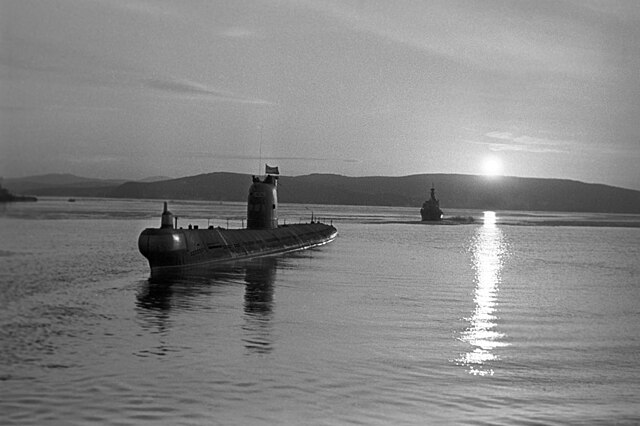
RIAN archives, Project 641 boat berthed at anchorage
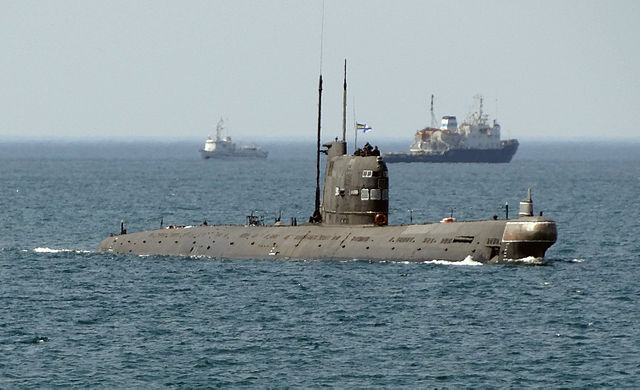
Ukrainian Foxtrot Zaporizhya
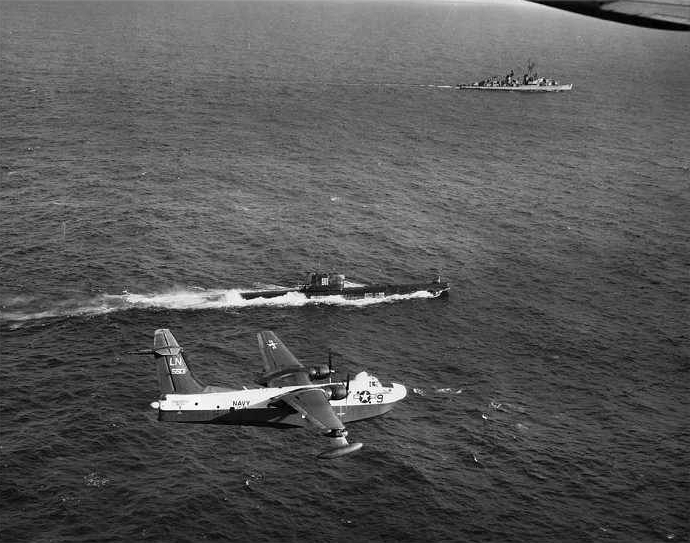
USS Charles P Cecil DD-835 shadowing B-36 off cuba, with a SP-5B Marlin flying above.

Preserved sub, berthed in Strood UK.
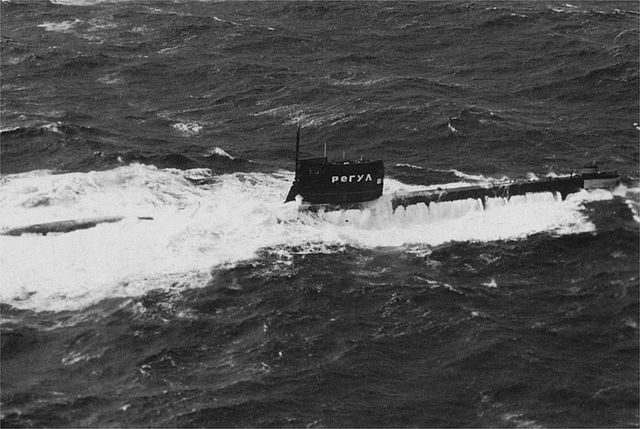
B-101 Regul
Current status
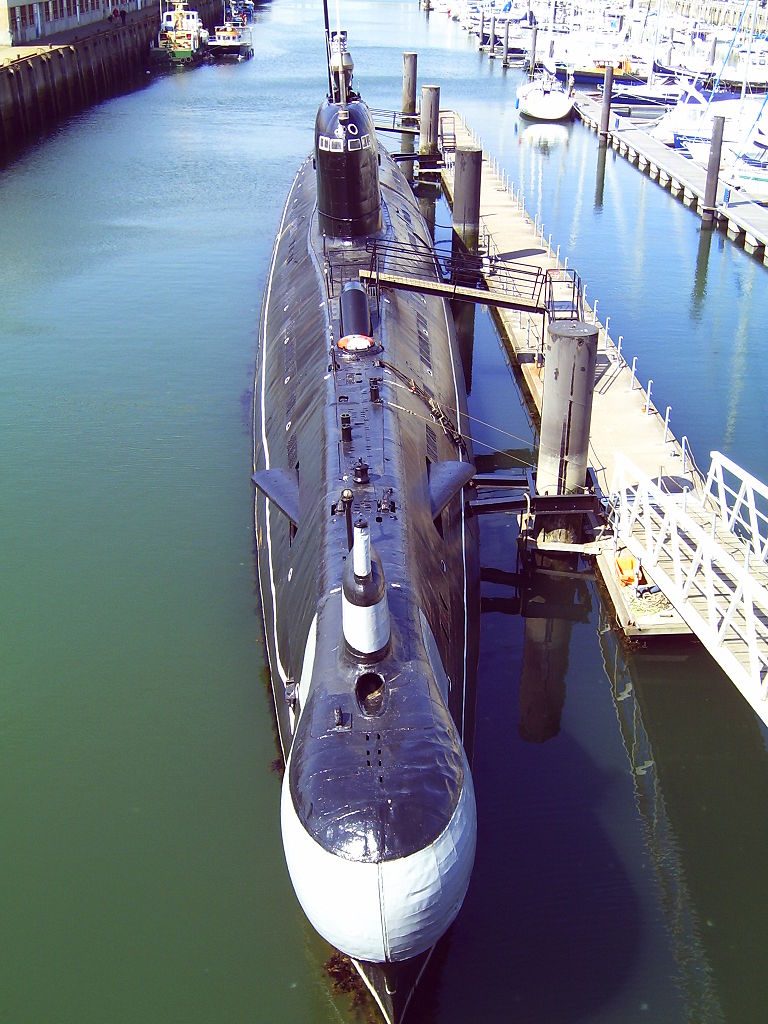
The cabin of the diesel-electric submarine B-107 of Project 641 is installed in the exposition of the Museum of the Russian Submarine Forces in St. Petersburg. B-413 was installed off the coast of Pregolya in the Museum of the World Ocean in Kaliningrad, its interiors have been preserved in their original form. The interiors were also preserved on the decommissioned INS Kursura S20, which is located in Visakhapatnam and turned into a museum.
The decommissioned B-427 was sold in 1995 to Australia, and 3 years later it took its place as a museum in Long Beach, USA, and the B-440 – in Vytegra, Vologda region.
The decommissioned B-39 is now an exhibit at the Maritime Museum of San Diego, USA.

Also, since they cured all the defects of the previous Project 611 boats, they were produced in mass without variants, the former were denied service for the most and instead used as tests boats for many experiments, leading to the Zulu I to Zulu V designs. Still, there was a sub-class, called Project I641 and I641K, not leading NATO to any denomination such as “FOXTROT II/III”. So it was merely only soviet classification, for export subs to India, Libya and Cuba.
Also, Project 641 led to 641B ASW submarine (NATO Tango class) improvised with the same components and surplus Project 651 (NATO JULIETT SSG) hull sections to gain about 50% more internal volume, hull diameter growing to 9m to accomodate a new larger sonar and plotting facilities for the equally new wire-guided torpedoes and three systems in all, bow array, sonar intercept set, underwater communications set. The Project 641 hull was also used as base for the Hotel class SSBNs, combining elements from Pr.627 (November) like the propulsion.
Exports
 Wilk class (Project 641)
Wilk class (Project 641)
To Poland 1960: Wilk, Dzik


ORP Wilk and Dzik
Two Project 647 boats, built in Sudomekh of Leningrad, pennant 292, 293, acquired in 1987-88 after the cancellation of more Kilo class orders to make up for a three subs fleet at alower cost. The clas comprised Wilk and Dzik. The former was fully upgraded in 1993. She also travelled 47000 nautical miles and dived 626 times. She was stricken in 2003. Dzik was scrapped in May 2005, but her conning tower was preserved at Gdynia.
 Kalvari class (Project I641)
Kalvari class (Project I641)
To India 1967-69: Kalvari, Kandhera, Karanj, Kursura
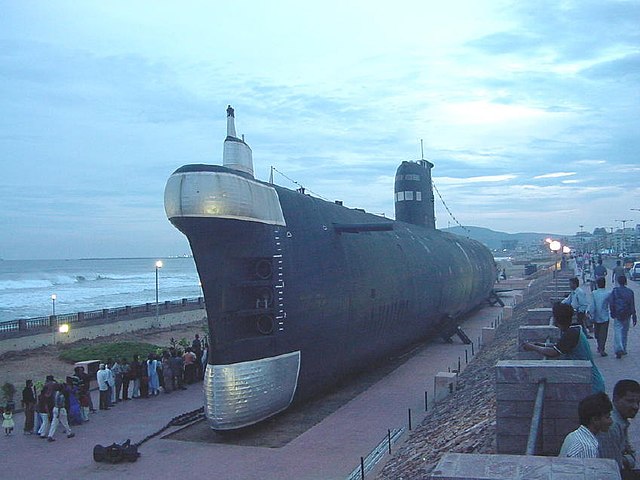
Soviet built Foxtrot-class boats, in Sudomekh from December 1967. Identical to the original boats. Four in service from 1967 to 2001. Four additional variants, later Foxtrot type as Vela class (see below). INS Kursura has been preserved museum on Ramakrishna Mission Beach, Visakhapatnam, and the sails of INS Kalvari is on display at the Visakhapatnam city museum. The one from Khanderi, Kursura, is also on display (photo). Specs as the original Foxtrot class: Displacement 1,957t/2484t for 91.3 x 7.5 x 6 m, 3 shafts diesels 6,000 hp 16.6/15.9 Knots, 250-280 m dive, Radar Nakat M, Sonar Feniks M, Artika, hercules, interceptor sonar, 10 x 533 mm TTs (6 bow, 4 stern).
 Vela class (Project I641K)
Vela class (Project I641K)
To India 1973-74 Vela, Vagir, Vagli, Vagsheer
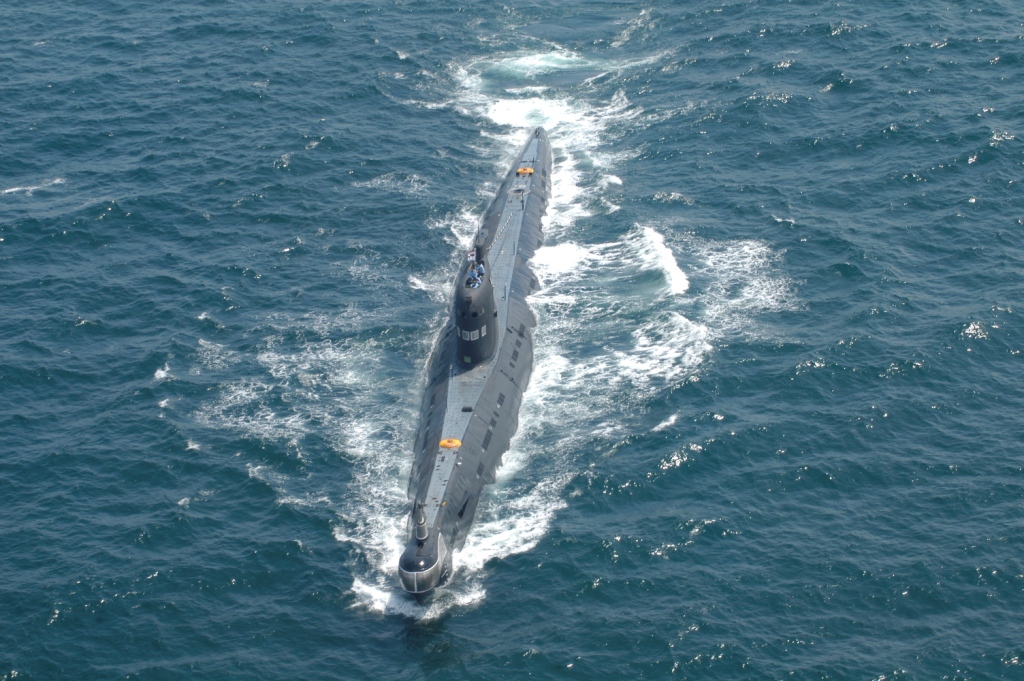
First started on early 1972, the last completed on 26 December 1974. Specifically they had 22 SET-65E/SAET-60 torpedoes or 44 mines in lieu of torpedoes. In service until 1997 for INS Vagsheer, 2001 for INS Vagir and 2010 for the remainder. One is waited to be converted as museum ship.
 Al Fateh class (Project I641K)
Al Fateh class (Project I641K)
To Libya 1976-82: Al Fateh, Al Ahad, Al Hunain, Al Mitraga, Al Badr, Al Khyber

Six units were in service, with two left but probably abandoned today. In 1982 Libya received six of these from the Soviet Union. From 1984, they made no submarine patrols as reported. It appeared they never sailed since and probably were in a state of disrepair. In 1993 one was reported sunk, not in a sortie but at berth, showing the poor state of her hull. Another was abandoned in Lithuania due to international sanctions. There were false reported of one being refitted in 2003. In 2011, the Libyan civil war saw one of these as well as a frigate and a corvette captured by the rebels at the Benghazi naval base. It is by all accounts, inoperable, but extant nonetheless.
 725 class (Project I641K)
725 class (Project I641K)
To Cuba 1982-84: 725, 727, 729

The Cuban Revolutionary Navy once operated three units, with hull numbers 309, 510 and 586, the last “Foxtrot” in operation anywhere in the world.
 725 class (Project I641K)
725 class (Project I641K)
Zaporizhzhia (ex B-435)

A single boat was captured in relaliation to operations in the Donbass and forced independence in Crimea, renamed Zaporizhzhia. Full logs below.
The fiormer sub B-435 served with the Soviet Red Banner Northern Fleet made 14 patrols since 1970, including a port call in Cuba. In 1990 she was transferred to the Soviet Black Sea Fleet and served until 1994 and the next year she was inoperable due to batteries issues. She was abandoned without maintenance.
In 1997 she was oficially handed over to the Ukrainian Navy during the partition of the Black Sea Fleet. The city’s community started to work out the accommodation needs of the crew and only by 2003 new set of batteries was purchased and installed, and she was repaired in Sevastopol. In 2005, Zaporizhzhia she was to sail to joint exercise with theItalian Navy but repairs never concluded. She stayed inactive as stated in 2006. In January 2007 MoD Hrytsenko started she was on sell.
As of July 2010 Zaporizhzhia she was prepared for trials, all repairs completed by 17 April 2011, trials successful by 18 July 2012. Late June 2013 maintenance and tests were completed.
On 22 March 2014 she was taken over by Russian forces after being surrounded by Russian Navy ships demanded surrender. She joined the Russian Black Sea Fleet but its staff rejected her as obsolete, so it was offered to return Zaporizhzhia to Ukraine and end as scrap-metal. But transfer plans were abandoned after the Donbass ceasefire on 1 July 2014. As of today she is still located by satellite imagery, operational status is uncertain.
Details of all submarines
Note: If logs are available, these will be completed.
 B-94 (1957)
B-94 (1957)
B-94 was laid down on 3 October 1957, launched on 28 December 1957, decommissioned on 1 October 1984, scrapped later
 B-95
B-95
B-95 was laid down on 2 February 1958 25 April 1958 22 February 1980 Decommissioned for scrapping
 B-36
B-36
B-36 was laid down on 29 April 1958 31 August 1958 24 August 1993 Decommissioned for scrapping
 B-37
B-37
B-37 was laid down on 18 July 1958 5 November 1958 11 January 1962 Sank after fire and multiple explosions
 B-133
B-133
B-133 was laid down on 27 September 1958 26 January 1959 1 October 1983 Renamed B-833
 B-135
B-135
B-135 was laid down on 20 December 1958 30 March 1959 1 July 1977 –
 B-139
B-139
B-139 was laid down on 25 February 1959 30 May 1959 1 October 1976 Renamed B-839
 B-116
B-116
B-116 was laid down on 9 June 1959 10 October 1959 28 September 1994 –
 B-130
B-130
B-130 was laid down on 22 August 1959 17 December 1959 1 October 1988 –
 B-85
B-85
B-85 was laid down on 23 December 1959 19 March 1960 19 April 1990 –
 B-59
B-59
B-59 was laid down on 21 February 1960 6 June 1960 19 April 1990 –
 B-156
B-156
B-156 was laid down on 20 April 1960 2 August 1960 19 April 1991 –
 B-153
B-153
B-153 was laid down on 6 August 1960 31 January 1961 24 June 1991 Renamed B-854
 B-164
B-164
B-164 was laid down on 26 October 1960 2 August 1960 3 July 1992 –
 B-33
B-33
B-33 was laid down on 3 February 1961 27 April 1961 24 June 1991 –
 B-105
B-105
B-105 was laid down on 1 July 1961 1 October 1961 24 August 1993 –
 B-169
B-169
B-169 was laid down on 17 August 1961 29 November 1961 19 April 1990 –
 B-38
B-38
B-38 was laid down on 30 October 1961 31 January 1962 25 April 1989 –
 B-53
B-53
B-53 was laid down on 8 January 1962 12 April 1962 19 April 1990 renamed B-853
 B-50
B-50
B-50 was laid down on 7 March 1962 15 June 1962 3 July 1992 –
 B-8
B-8
B-8 was laid down on 9 May 1962 21 July 1962 19 April 1990 –
 B-31
B-31
B-31 was laid down on 18 August 1962 3 November 1962 24 June 1991 –
 B-2
B-2
B-2 was laid down on 27 October 1962 25 January 1963 24 June 1991 –
 B-55
B-55
B-55 was laid down on 22 January 1963 5 April 1963 3 July 1992 renamed B-855
 B-98
B-98
B-98 was laid down on 4 April 1963 15 June 1963 2001 Renamed 292 Wilk
 B-101
B-101
B-101 was laid down on 19 June 1963 30 August 1963 30 June 1993 –
 B-6
B-6
B-6 was laid down on 9 August 1963 30 November 1963 24 August 1994 –
 B-103
B-103
B-103 was laid down on 14 December 1963 16 April 1964 24 June 1991 –
 B-109
B-109
B-109 was laid down on 22 February 1964 17 June 1964 28 September 1997 –
 B-107
B-107
B-107 was laid down on 18 April 1964 25 July 1964 4 August 1995 renamed B-807
 B-112
B-112
B-112 was laid down on 19 June 1964 27 October 1964 19 April 1990 –
 B-25
B-25
B-25 was laid down on 26 August 1964 22 December 1964 3 July 1992 –
 B-205
B-205
B-205 was laid down on 17 June 1969 29 August 1969 31 January 1996 –
 B-143
B-143
B-143 was laid down on 21 October 1959 17 February 1960 24 June 1991
 B-15
B-15
B-15 was laid down on 10 October 1963 21 February 1964 29 October 1992 –
 B-427
B-427
B-427 was laid down on 10 April 1971 22 June 1971 28 April 1994 Formerly a Museum, Long Beach, California, USA
 B-39
B-39
B-39 was laid down on 9 February 1967 15 April 1967 5 July 1994 Formerly a Museum, San Diego, California, USA
 B-440
B-440
B-440 was laid down on 1 June 1970 16 September 1970 1999 Museum, Vytegra, Russia
 B-435
B-435
Built in 1970, laid down on 24 March 1970, completed on 29 May 1970. From September to November 1970, she made a 20 days, 422 hours (236 submerged, 186 surfaced) cruise over 2,672 km (1,660 mi) while surfaced and 695 km (432 mi) submerged. She made 15 dives, consuming 125 tons of fuel. Baltic fleet, Atlantic Ocean. June-December 1971, 210 days cruise over 29,519 km (18,342 mi) surfaced, 8,594 km (5,340 mi) submerged. 71 dives, 825 tons of fuel. 27 June to 10 August 1972 overhaul. No records for the rest. July to October 1994, 16 days at sea, 391.9 km (243.5 mi) surfaced 6.8 km (4.2 mi) submerged. January 1995 85 km (53 mi) in 4 hours while being towed as part of the black sea fleet.
 B-9
B-9
B-9 was laid down on 26 December 1964 31 March 1965 17 July 1997 –
 B-4
B-4
B-4 was laid down on 14 June 1960 3 October 1960 24 June 1991 –
 B-57
B-57
B-57 was laid down on 23 April 1959 15 August 1959 24 June 1991 –
 B-7
B-7
B-7 was laid down on 14 April 1961 29 June 1961 19 April 1990 –
 B-21
B-21
B-21 was laid down on 29 October 1964 16 February 1965 3 July 1995 ex-Seafront Zeebrugge Museum, Belgium. 2019 towed away for scrapping in Ghent.
 B-26
B-26
B-26 was laid down on 6 May 1965 10 August 1965 24 June 1991 –
 B-28
B-28
B-28 was laid down on 24 May 1965 10 August 1965 30 June 1993 –
 B-34
B-34
B-34 was laid down on 13 August 1965 16 November 1965 24 June 1991 –
 B-40
B-40
B-40 was laid down on 24 September 1965 16 November 1965 30 June 1993 –
 B-29
B-29
B-29 was laid down on 25 March 1966 20 May 1966 2003 1988 Renamed 293 Dzik
 B-41
B-41
B-41 was laid down on 7 April 1966 20 May 1966 24 August 1993 –
 B-46
B-46
B-46 was laid down on 13 August 1966 24 December 1966 30 June 1993 –
 B-49
B-49
B-49 was laid down on 12 October 1966 24 December 1966 31 December 1993 As “Foxtrot B-39 U-475 Black Widow”, former museum awaiting restoration on the River Medway near Rochester, Kent, England
 B-397
B-397
B-397 was laid down on 7 May 1967 22 August 1967 30 June 1993 –
 B-400
B-400
B-400 was laid down on 29 May 1967 22 August 1967 24 September 1991 –
 B-413
B-413
B-413 was laid down on 28 June 1968 7 October 1968 1999 Museum, Kaliningrad, Russia
 B-416
B-416
B-416 was laid down on 18 July 1968 25 February 1969 3 July 1992 –
 B-213
B-213
B-213 was laid down on 1 October 1969 20 January 1970 30 June 1993 –
 B-409
B-409
B-409 was laid down on 18 December 1970 2 March 1971 30 June 1993 –
Read More/Src
Books
Links
navypedia.org/
militaryrussia.ru/
snariad.ru/
ru.wikipedia.or
scalemodels.ru/
deepstorm.ru/
submarines.narod.ru
sdmaritime.org/
interfax-russia.ru/
deepstorm.ru/
tass.ru/
Videos
Soviet Foxtrot-Class Submarine – Part 1
Model Kits
Admiralty Model Works 1:350/1:700
B-164 Resin Kit “Jupiter” Crusade, 1982 Ark Models 1:350, B-36 Resin Kit Cuban Crisis 1962, same.
Typ 641 Foxtrot class Bilmodel Makers 1:350
Ukrainian Submarine “Zaporizhzhia” UA MikroMir 1:350
Project 641 “Foxtrot” submarine Admiralty Model Works 1:700
Project 641 (early) OKB Grigorov 1:700
general query on scalemates.com

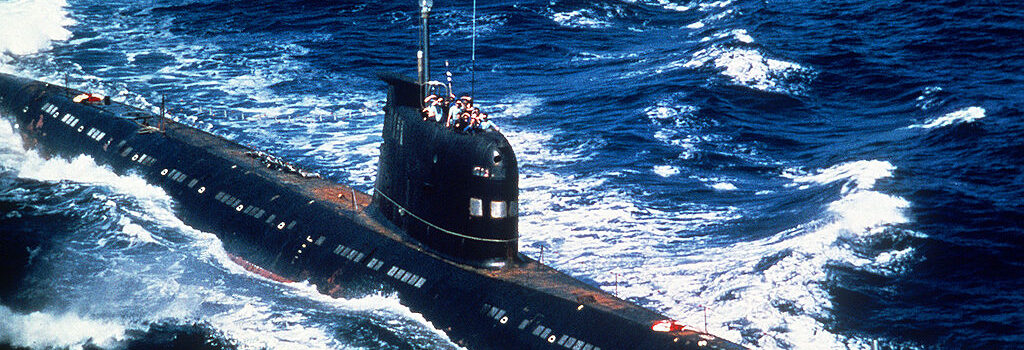

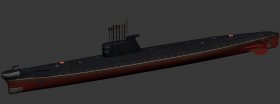
 Latest Facebook Entry -
Latest Facebook Entry -  X(Tweeter) Naval Encyclopedia's deck archive
X(Tweeter) Naval Encyclopedia's deck archive Instagram (@navalencyc)
Instagram (@navalencyc)





 French Navy
French Navy Royal Navy
Royal Navy Russian Navy
Russian Navy Armada Espanola
Armada Espanola Austrian Navy
Austrian Navy K.u.K. Kriegsmarine
K.u.K. Kriegsmarine Dansk Marine
Dansk Marine Nautiko Hellenon
Nautiko Hellenon Koninklije Marine 1870
Koninklije Marine 1870 Marinha do Brasil
Marinha do Brasil Osmanlı Donanması
Osmanlı Donanması Marina Do Peru
Marina Do Peru Marinha do Portugal
Marinha do Portugal Regia Marina 1870
Regia Marina 1870 Nihhon Kaigun 1870
Nihhon Kaigun 1870 Preußische Marine 1870
Preußische Marine 1870 Russkiy Flot 1870
Russkiy Flot 1870 Svenska marinen
Svenska marinen Søværnet
Søværnet Union Navy
Union Navy Confederate Navy
Confederate Navy Armada de Argentina
Armada de Argentina Imperial Chinese Navy
Imperial Chinese Navy Marinha do Portugal
Marinha do Portugal Mexico
Mexico Kaiserliche Marine
Kaiserliche Marine 1898 US Navy
1898 US Navy Sovietskiy Flot
Sovietskiy Flot Royal Canadian Navy
Royal Canadian Navy Royal Australian Navy
Royal Australian Navy RNZN Fleet
RNZN Fleet Chinese Navy 1937
Chinese Navy 1937 Kriegsmarine
Kriegsmarine Chilean Navy
Chilean Navy Danish Navy
Danish Navy Finnish Navy
Finnish Navy Hellenic Navy
Hellenic Navy Polish Navy
Polish Navy Romanian Navy
Romanian Navy Turkish Navy
Turkish Navy Royal Yugoslav Navy
Royal Yugoslav Navy Royal Thai Navy
Royal Thai Navy Minor Navies
Minor Navies Albania
Albania Austria
Austria Belgium
Belgium Columbia
Columbia Costa Rica
Costa Rica Cuba
Cuba Czechoslovakia
Czechoslovakia Dominican Republic
Dominican Republic Haiti
Haiti Hungary
Hungary Honduras
Honduras Estonia
Estonia Iceland
Iceland Eire
Eire Equador
Equador Iran
Iran Iraq
Iraq Latvia
Latvia Liberia
Liberia Lithuania
Lithuania Mandchukuo
Mandchukuo Morocco
Morocco Nicaragua
Nicaragua Persia
Persia San Salvador
San Salvador Sarawak
Sarawak Uruguay
Uruguay Venezuela
Venezuela Zanzibar
Zanzibar Warsaw Pact Navies
Warsaw Pact Navies Bulgaria
Bulgaria Hungary
Hungary

 Bundesmarine
Bundesmarine Dutch Navy
Dutch Navy Hellenic Navy
Hellenic Navy Marina Militare
Marina Militare Yugoslav Navy
Yugoslav Navy Chinese Navy
Chinese Navy Indian Navy
Indian Navy Indonesian Navy
Indonesian Navy JMSDF
JMSDF North Korean Navy
North Korean Navy Pakistani Navy
Pakistani Navy Philippines Navy
Philippines Navy ROKN
ROKN Rep. of Singapore Navy
Rep. of Singapore Navy Taiwanese Navy
Taiwanese Navy IDF Navy
IDF Navy Saudi Navy
Saudi Navy Royal New Zealand Navy
Royal New Zealand Navy Egyptian Navy
Egyptian Navy South African Navy
South African Navy






























 Ukrainian Navy
Ukrainian Navy dbodesign
dbodesign